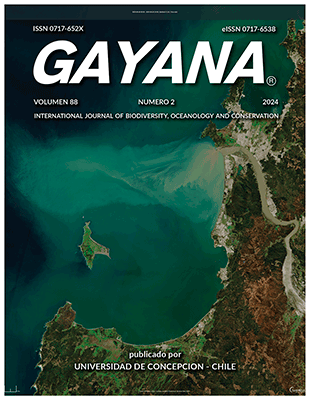Abstract
The sediments of the Gulf of Arauco (GA) are under the influence of several inputs from industrial, agricultural, forestry, and urban activities, which generate significant impacts on the environmental conditions of the coastal zone. The available information on the environmental status of the GA is limited and fragmented. This study evaluated the chemical composition of the GA sediments during spring 2021, summer, and winter 2022. The results show notable differences in the spatial distribution of the parameters analyzed, identifying areas with higher concentrations of metals and organic compounds, specifically in the area that includes Escuadrón Sur, Bahía Coronel, and Bahía Lota, which are industrial and urban centers. These areas presented a dominance of fine to very fine sands and Igeo and PLI index that classify these sediments as altered; suggesting that the released anthropogenic emissions tend to accumulate close to the sources. On the other hand, the areas between the mouth of the Biobío river up to the Escuadrón Norte sector and from Laraquete to Punta Lavapiés show lower concentrations of metals and organic compounds, with a predominance of medium to fine sands, and low Igeo and PLI index, classifying these sediments as uncontaminated. Comparable distribution patterns were observed between sampling campaigns, with no statistically significant differences between them. The parameters analyzed in sediments show that there are spatial, but not temporal, variations in the GA coastline.

This work is licensed under a Creative Commons Attribution-NonCommercial 4.0 International License.
Copyright (c) 2024 Cristian Chandia, Marco Salamanca, Aldo Hernández, Luis Bermedo, Eduardo Hernández-Miranda, Oscar Inostroza-Michael

